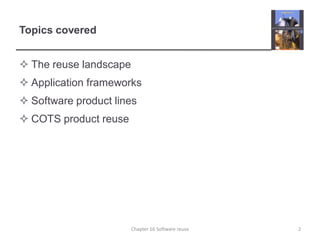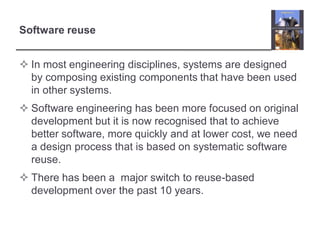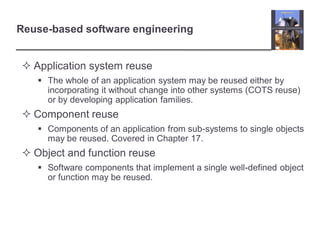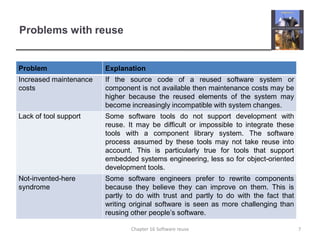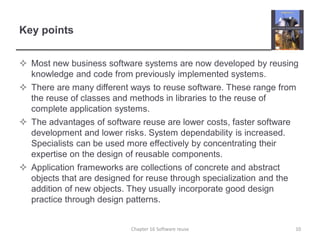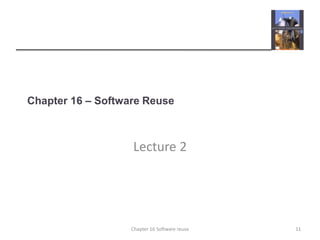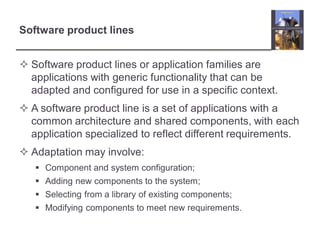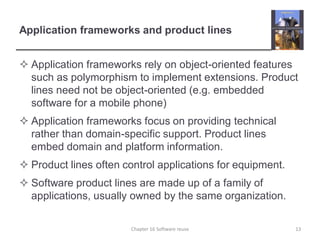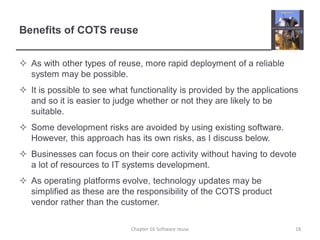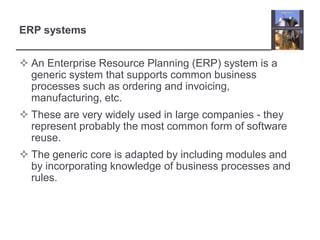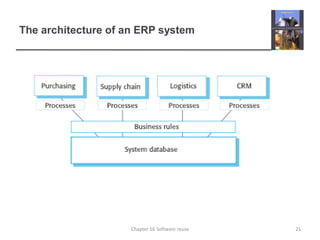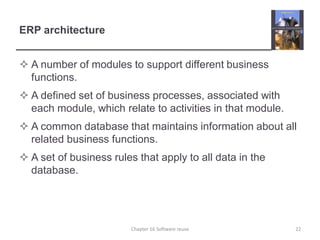The document provides an overview of software reuse in engineering, discussing its benefits such as increased dependability, reduced risks, and accelerated development. It outlines various approaches to software reuse, including application frameworks, software product lines, and commercial-off-the-shelf (COTS) products, along with associated challenges like maintenance costs and the 'not-invented-here syndrome.' Additionally, it highlights the importance of adapting generic systems like ERP for specific business needs and the role of component libraries in effective software development.

